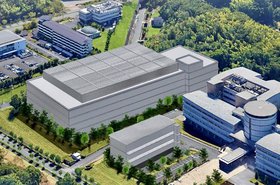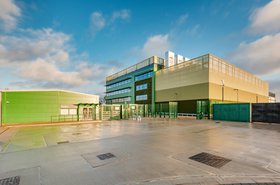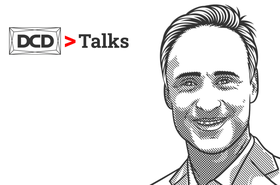According to Allied Market Research, the global data center market generated $59 billion in 2020, and this is estimated to reach $584 billion by 2030.
While that growth is great for hyperscale providers, there’s an unseen impact that it is having on the enterprise market – not that the impact is necessarily positive, or negative.
But before we get ahead of ourselves, let’s go a few years back and consider how the industry got to where it is today.
Bruno Berti is senior vice president of Product Management at NTT Global Data Centers in the Americas and, having worked for the company for close to 10 years, is in a perfect position to pass on his perspective.
Market expansion
It’s hard to underestimate the impact that more than 20 years of solid, compound annual growth has had on the data center sector, growth that still shows no signs of letting up. Over the past decade, this growth has been driven by digitization and the shift of enterprise applications to cloud services.
And, regardless of whatever anyone says about location no longer being so important in an age of ultra-fast fiber, they still matter. There are a number of key data center markets around the world in which every data center operator must have an established presence and, as a result, demand and deal sizes have continued growing. But this has, nevertheless, also had a knock-on effect on the number and size of secondary markets, too.
“Now we're talking about expanding in secondary markets that people wouldn't even think there are data centers in – these smaller locations are now absorbing a lot of capacity,” says Berti.
“It's really been changing what we do and what our clients do, and we’ve always stayed on top of this [market changes]; we don’t just do data centers, we also provide IT services for those large enterprises and hyperscalers.”
So, why is the spread of core markets expanding? It is due to good and simple demand. To be in an industry with insatiable demand is a very comforting position to be in. Like a chicken capable of laying golden eggs. The only issue is that while demand can continue to grow, the chicken can’t lay golden eggs faster and faster forever.
In times gone by, while enterprise and hyperscale customers faced very different challenges, as data centers continue to scale up and demand for capacity continues to accelerate, today these two customer types really aren’t so different, with supply chain and capacity planning issues now a shared challenge – a challenge NTT has not shied away from.
Buying for today
“What we've noticed in the last three years, probably even pre-Covid, was trying to map and keep ahead of the demand from our customer base has been very interesting and a great opportunity for us to change some of the products, the way we do things, and the way we build things.”
Notably, both hyperscalers and enterprise companies have adjusted how they approach capacity planning. For a long time, it has been very common for companies to forecast out a few years and contract for that future capacity.
Initially, this would look like simply buying more than they initially needed for their set contract. However, more recently this has shifted into buying what you need today and placing the capacity and financial risk on the data center provider.
“Clients used to buy more than they initially needed, in anticipation of growing to that capacity. That was a common practice, but what started happening was that people would have extra capacity at the end of the contract, which was basically wasted money. So, we saw a behavioral change a few years ago, in that clients stopped buying for five years, and they started buying for today.
“But then they wanted to make sure that we had adjacent capacity either in ROFR – right of first refusal, or ROFO – right of first option, and reservations. There are 15 different ways to say the same thing, but customers were demanding that we hold capacity for them.
“When there’s a lot of inventory, you can hold a little capacity in reserve. But probably four years ago, it changed where customers would buy x and expect 3x in reservations. Some of us that had extra capacities would agree to that to the point where, now, we have all this stranded capacity in reservations that we can't sell.”
Due to various supply chain challenges, this stranded capacity is of course no longer a viable – nor sustainable – position to be in. With demand massively outweighing what can be produced, capacity in reserve is neither feasible nor conducive to enabling the industry to continue growing – or achieving sustainability and efficiency gains – regardless of whether the customer is a hyperscaler or an enterprise.
Historically, enterprises haven’t exactly been revered for their capacity management capabilities and now that this ‘stranded capacity’ model has been vetoed, it is forcing an industry-wide need to create more symbiotic working relationships with these enterprises.
“There is the opportunity to better utilize what you already have. I think a critical dynamic that we need is to partner better with our enterprises and our customers,” says Berti.
But to further complicate matters, as the industry has grown and developed, so have its customers. Many enterprise and hyperscale customers now host their IT in a variety of locations, be it multiple colocation facilities and on-prem, or in the cloud. It is harder now than ever before to have clear visibility of your IT infrastructure which makes managing workloads all the more challenging.
A holistic approach
Via NTT’s portal, customers can have clear visibility of the utilization of their IT infrastructure and its connectivity. According to Berti, NTT’s portal provides customers with the opportunity to ‘look under the covers of what’s actually going on’, beyond just looking at a data center’s space, power, cooling, and security.
And due to the way workloads are managed evolving across both hyperscale and enterprise markets, connectivity has become increasingly important. As one of the largest providers of IP and telecoms globally, NTT is perfectly positioned to leverage its multi-faceted expertise, alongside colocation, to not only deliver the connectivity required for enterprises and hyperscalers as separate entities, but bring the two together within one ecosystem for the benefit of all.
“It's part of the decision criteria. What SD Wan services, and what connectivity services do I have outside of my data center? It's not just about cross connects anymore. It's how do I get that enterprise client to that hyperscaler that’s on the other side of that wall? I can't just give them a cross-connect, there has to be a whole network node configured,” says Berti.
In this respect, NTT is a quadruple threat. An IP provider, a telecommunication provider, a data center provider, and a colocation provider. This is how you get all these environments to work together, says Berti.
And as a provider to both enterprise and hyperscale customers, NTT has seen first-hand that these two previously siloed markets are, in fact, driving demand for one another.
“The value of a hyperscaler is the enterprise clients that need their services, and the value of the enterprise clients are the hyperscalers that are selling services to them,” says Berti.
“Solving the needs of the enterprise is, for me, as important as solving the needs for the hyperscalers. In the past people were talking about three to five kW a rack, now, we're talking 20 to 30 kW per rack. We are deploying new technologies in the data centers, bringing 400 volts to the floor instead of 208 volts to get more efficiency, more power with less copper, less transformation, and fewer losses.
“Hyperscalers have been driving some of those needs, which are also benefiting the enterprises. So, you'll see our products are evolving, the solution set evolving, the densities and the needs have all been evolving to try and meet those requirements.”
Going forward, this continued evolution hinges upon these two environments, therefore the ability to meet their needs in tandem is critical. Although challenging, NTT sees a renewed symbiotic relationship between hyperscale, enterprises and providers as a win-win for all, and ultimately, an opportunity to prepare our industry for the future, whatever it may bring.
Find out more about NTT’s Global Data Centers here.
More from NTT
-

NTT to build new 30MW data center in Kyoto prefecture, Japan
New 10,900 sqm facility to sit on NTT campus in Soraku-gun
-

Sponsored Surviving the revolution
The internet revolution will continue to reverberate for decades. The question is, does your organization have the digital backbone to survive the revolutions to come?
-

Sponsored Best of both worlds
Once upon a time, a London location might’ve meant forsaking climate consciousness for connectivity, but what if we told you, you can have both?

